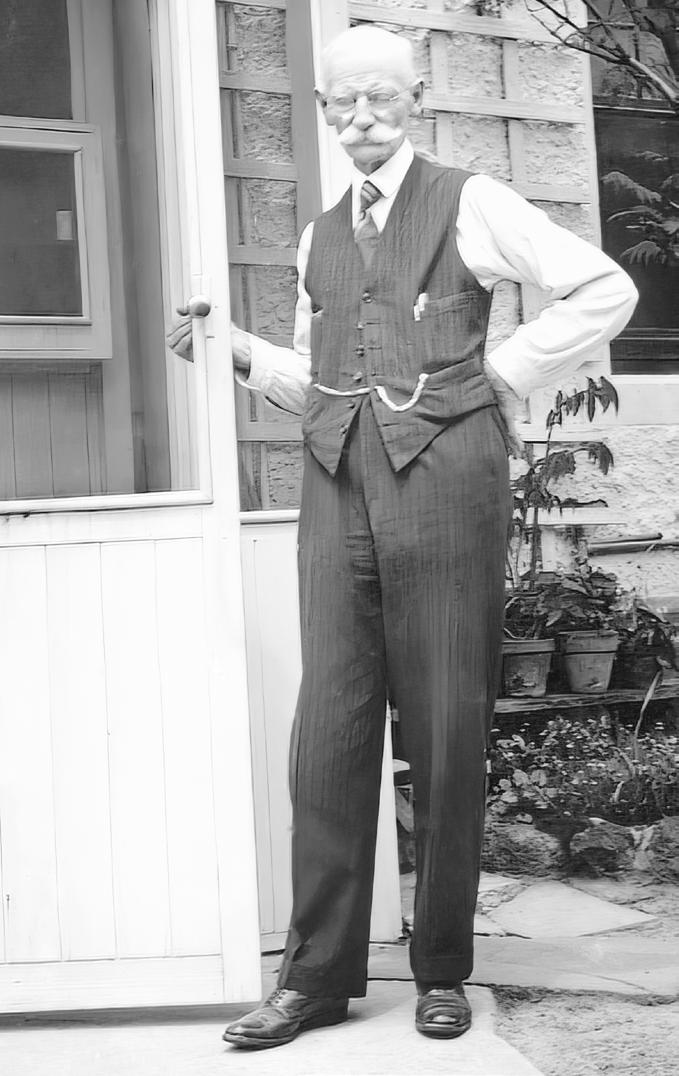
7 minute read
auStralia'S pioneer in a Daimler
The founder of Shell Australia undertook gruelling drives from 1901. In 1907 in his Daimler he was the first to drive return from Melbourne to Adelaide.
Strapping 37 years old Ernest Wagstaff, with fine signature moustache, in one of his Daimlers prior to the epic Adelaide drive. It is a special-bodied two seater model.
Advertisement
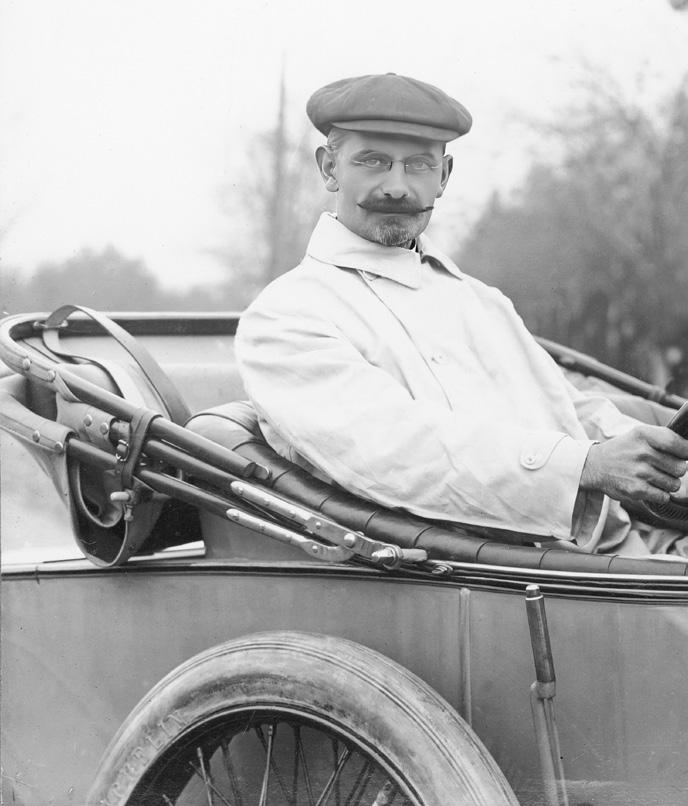
Still behind the wheel at Bathurst in 1908, driving the same Daimler which made the assault from Melbourne to Adelaide and return in 1907. It looks in good condition.
In 1903 the business he worked for joined the 'Shell' Transport & Trading Co. Ltd, and Royal Dutch Petroleum in forming Asiatic Petroleum to distribute the products of the three parent firms in Asia, Australasia and parts of Africa. The Wagstaffs returned to Melbourne in 1904 to head Asiatic's Australasian subsidiary.
He began work as an office junior in London in 1886, then three years later entered the petroleum industry, rising quickly in a subsidiary of Standard Oil, followed by two Rothschild oil companies. He made his name by organising the construction of terminal facilities for kerosene, then the main oil product.
On October 10, 1894 at Woodford, Essex, he married French-born, but English-raised, Florence Emilie Clerc.
Realising the future lay with internal combustion engines, 'Waggy' (to his friends), brilliantly had it written into his contract that he would receive a commission from all products which went through the business! It's difficult to imagine how much money that evolved into with petrol becoming a necessity!
He named the new enterprise the British Imperial Oil Co. Ltd, hoping to appeal to the patriotism of his customers. It was retitled Shell Australia in 1927.
Ernest Wagstaff despatched one of the first Daimlers to Australia in 1903, ready for his imminent arrival the following year.
Within the ranks of the relatively wealthy in Australia the size of the investment placed in a car indicated much about the owner. Wealthy bought Rolls-Royces, aristocracy bought Daimlers.
There was no bitumen then on roads out of the city, so even before the assault on Adelaide, the Daimler is fitted with chains on the rear wheels. Not one for pretension, Waggy holds the oil can.
Driving through the Coorong in 1907. The area is a conservation zone and exists as it was when Waggy passed through. The four cylinder Daimler had a capacity of 8.2 litres.
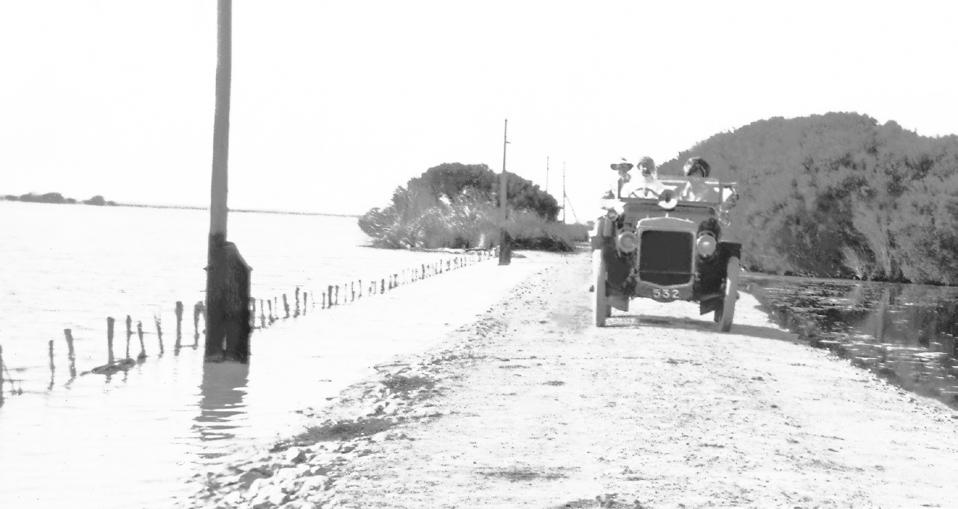
On the Coorong they encountered lakes to drive through, and sandy deserts for which they brought matting to lay over the sand. We are not sure about the stick though ...
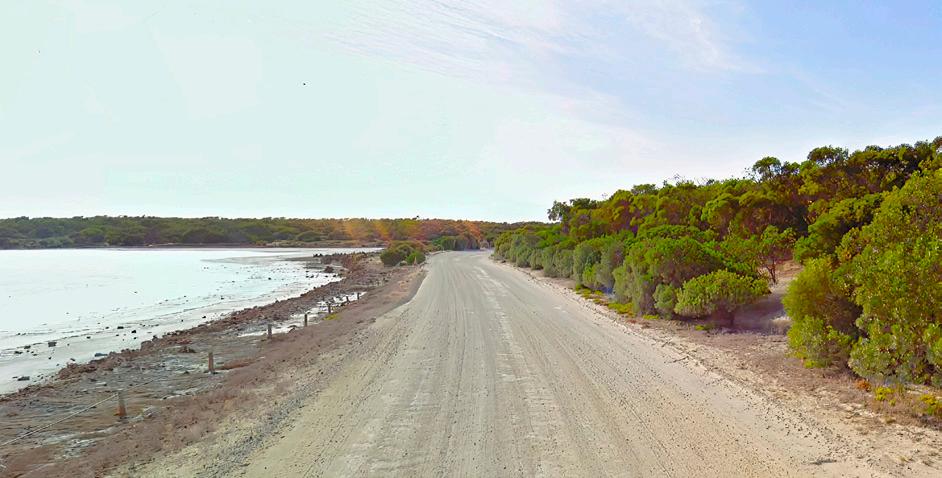
Australian agricultural sales giant Dalgety, held the exclusive rights for sales of Daimler cars before the War. The company’s approach to marketing indicates much about Australian society and its reflection of the class structure at home in Britain. Social identity was a rich vein to be tapped when the conditions were right.
He may not have admitted it, but an ulterior motive for driving into the outback in his Daimler was to establish usable roads to deliver his products between major cities and into the outback. He was brilliantly successful in that.
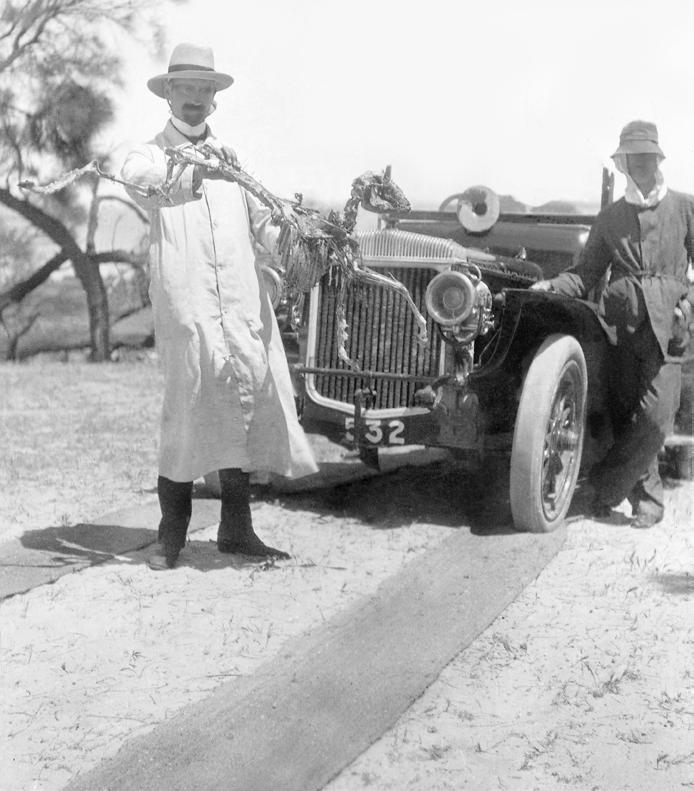
Until 1908 Daimler built a range of large and luxurious cars, powered by various four and six-cylinder engines with capacities between 3.3-litres to 10.4-litres with conventional ‘poppet’ valves.
The car Wagstaff purchased for his and his wife's use, including their pioneering drives, was a Daimler 38 HP. It was more advanced with a 'Silent Knight' engine which was quieter, and employed direct drive doing away with chains.
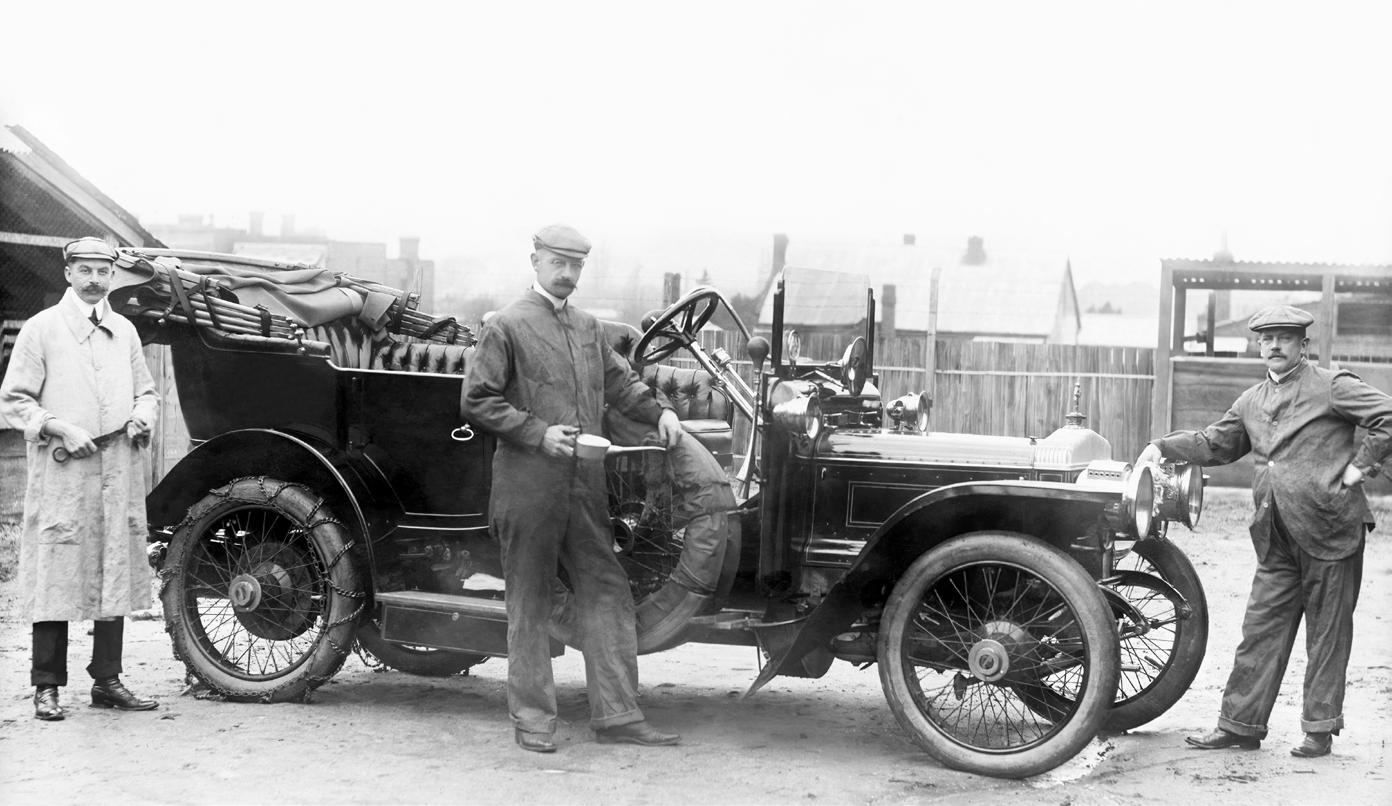
Daimler’s reputation inspired a small number of early owners. Western Australian businessman Richard Strelitz imported one of the first examples in 1903; he was followed by Waggy, then South Australian lawyer Robert Robinson and pastoralist Keith Bowman. Prices of Daimlers before shipment ranged from £1100 for a sevenseat limousine or landaulette - the equivalent of over $350,000 - down to £675 for a basic four-seat Phaeton with no hood or windscreen for some $250,000.
Dalgety and Company decided to add motor vehicles to their inventory of products for Australian consumers, and that included Austin and many other marques. The decision to take on Daimler was in response to the Daimler’s 1907 move to increase its colonial and foreign markets. They included agencies in Spain, British Columbia, Borneo, the Transvaal and New Zealand.
On 25 September 1907, it announced Dalgetys had recently been appointed as the sole agents for Daimler cars for the Commonwealth, and they would soon be in possession of cars for demonstration.
By November, the company had received its first three Daimlers, and invited ‘inspection by intending buyers’ at its Sydney garage. The same offering was made at its Melbourne premises.
Wagstaff drove his to remote areas with as good as no facilities or communications. For the run in 1908 from Melbourne to Adelaide, he stripped the luxury fittings in order to fill the car with matting, camping equipment, spare parts and whatever was needed. In fact the trip was undertaken by four people in two Daimlers, and Waggy's wife was one of the intrepid crew.
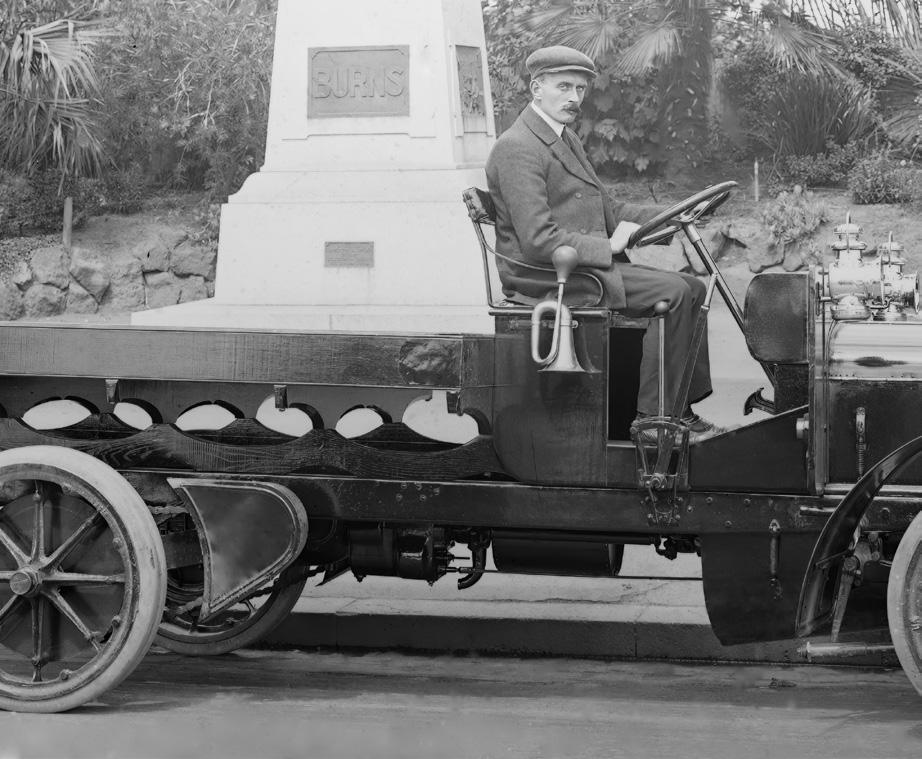
Ninety Mile Desert, the extremely sandy stretch of the Coorong, had inhibited motoring between Melbourne and Adelaide until then.
It was reported in New Zealand that the drive to Adelaide - and backwas a huge success and the Daimler performed faultlessly. They said in Auckland: "He demonstrated the practicality of the route for motors, although he admits the state of the weather must count for much. To overcome the difficulties of the sand on the Coorong, he utilised two strips of coconut matting 36 feet in length and 15 inches wide, which were laid as occasion required. He found the tracks numerous, but the best one to pick difficult. More than once he had to cut his way through the scrub which cost him much time. Particular attention was paid to the route in view of other motorists' use in the future. Mr Wagstaff intends to supply the Automobile Club with details of the route.
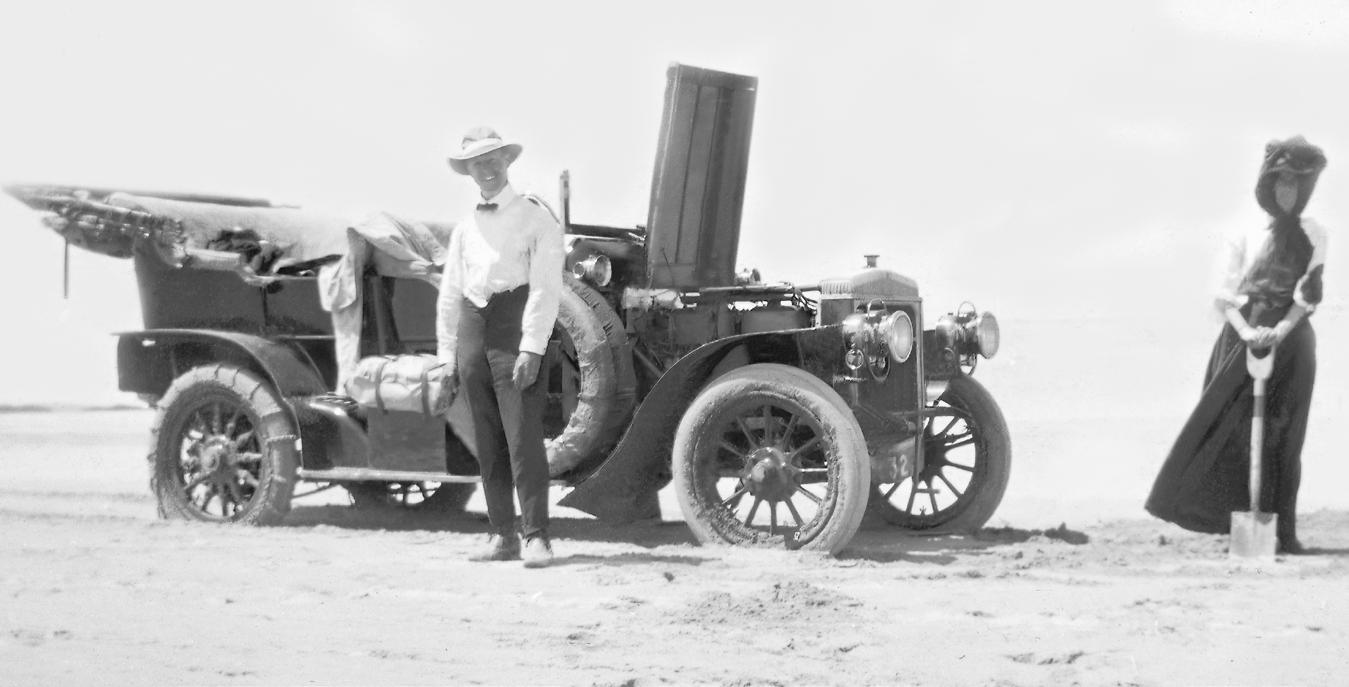
"The car weighed more than two and
Image 01/02 a quarter tons which added to the struggles, but on the run homeward the journey was actually 30.5 hours." He was an early member (Life Member 1958) of the (Royal) Automobile Club of Victoria. which the colossal expansion of a profitable industry made practicable.
Wagstaff helped to expand the market for his products, and during WW1 45 years old Ernie oversaw the introduction of bulk-handling of motor spirit in Melbourne and Sydney. His company was the biggest supplier in Australia for most of the twentieth century.

The crude oil which the Royal Dutch/Shell Group produced in the Netherlands, East Indies and British Borneo was particularly suitable for refining into fuel for early car engines. Additionally, Waggy organised for all oil tanks and even all of the millions of fuel tins required, to be built locally.
He worked both co-operatively and competitively with other leaders of the local oil industry, particularly H. C. Cornforth of the Vacuum Oil Co. Pty Ltd, the chief Standard Oil (Mobil) outlet in Australia.
Made wealthy by the commission
Image 03
As an employer, Wagstaff shared the conglomerate's paternal, gentlemanly, public-spirited values, basis of his remuneration, Waggy retired in 1927, and built up a collection of antiques at Toorak. It included English antique furniture, sterling silver, early china, clocks, workshop equipment, a Rover etc.
To get away from the demands of their city life, they bought land for a 'weekender' at Doncaster East - 19 kilometres from Toorak - but in remote country then. The new house, which stood on a hill was built in 1921. A few years later, and even still today, the intersection was being called 'Wagstaff's Corner'. His new palatial house was named Hilldene and it still survives.
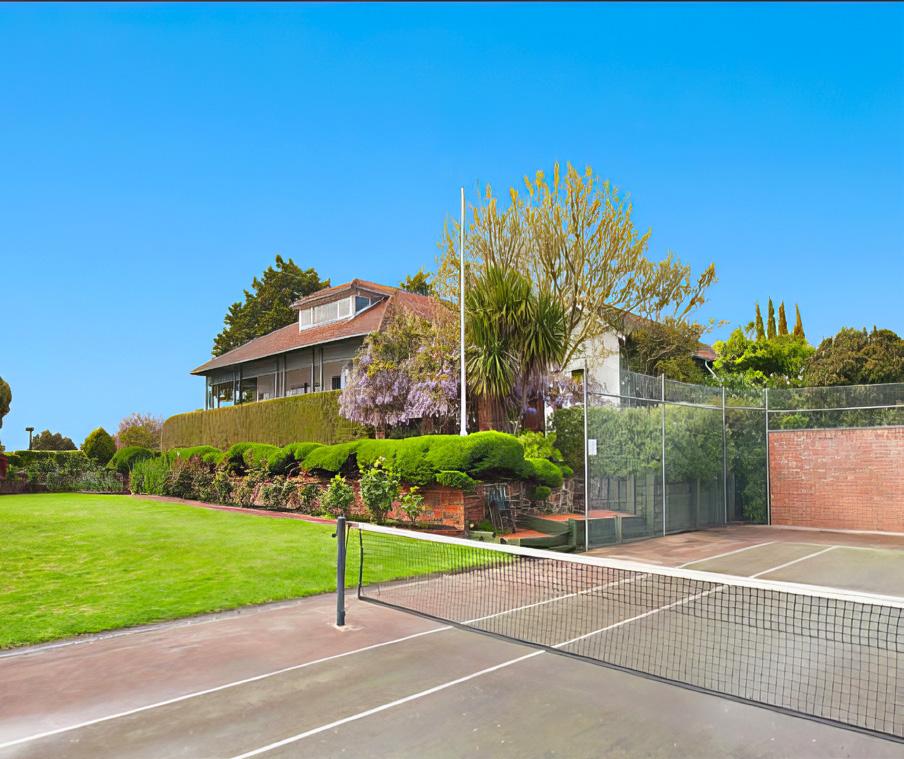
When the original owner of the 47 acre property died in 1920, his widow sold the land to the Wagstaffs. They looked at the rows of healthy fruit trees, and beyond to the hills and distant mountains. It was the largest and finest house.
At the end of a week of work in the city, he was driven out to Hilldene by his chauffeur. People in East Doncaster became accustomed to the sight of the large black Stutz going past, with Wagstaff sitting up in the back. Usually, he came on his own to enjoy the weekend as a gentleman farmer, but at times he invited guests. On these occasions, Florence came with him. Then Hilldene came to life and there were happy groups on the lawn, lively games on the tennis court with afternoon tea on the verandah.
On New Years eve, the Doncaster band played on the lawn, they entertained the guests and enjoyed a sumptuous supper.
Ernie became a legend to East Doncaster school children. Every year he provided them with a trip to the zoo in fruit wagons which belonged to members of the school committee. The boys sat on the tail boards with their feet dangling.
Each child was given a bag of lollies and an ice-cream. It was a long trip to the zoo by horse and cart, so Ernie arrange to stop and had hot buttered rolls ready. At the zoo, each child was given a ticket for a ride on the donkey, the train and on Queeny the elephant.
In 1927, Wagstaff retired after twenty-three years running and building up the company in Australia and New Zealand. He was presented with a book, beautifully bound and hand tooled in Royal Blue Niger Morocco and gold leaf. Florence was presented with a writing bureau in selected figured Australian blackwood.
Ernie and Florence Wagstaff spent more time at Hildene. He had two large English cars, and continued his interest in the East Doncaster School, gifting a tennis court and patronising other local projects.
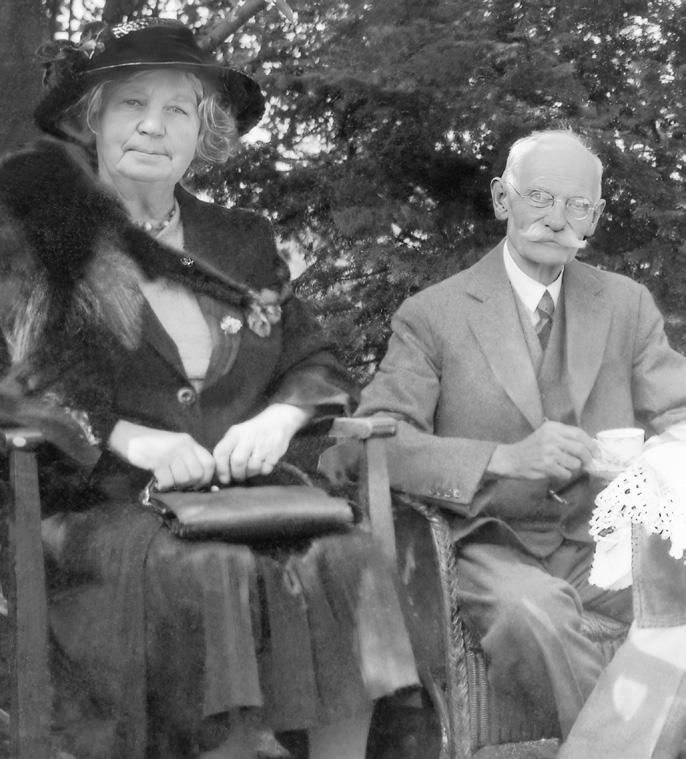
Ernie retired when he was 57, and would live until the age of 95 in 1965, but his wife sadly died in 1952. He directed the bulk of his estate was to be used to provide incomes for his nieces and nephews in England until their deaths; the principal was then to be shared between the (Royal) Victorian Eye and Ear Hospital and Royal Victorian Institute for the Blind. His last surviving niece turned the estate over in 1996, when its value was approximately $11 million. The bashful intrepid pioneering Daimler driving couple led colourful and very worthwhile lives.
Image 04
In their older age Florence and Ernest spent their time between their luxurious homes in Toorak and Doncaster East.
Image 05
Their Hilldene home remains intact and in very fine order into the twenty-first century. It is a tribute to the couple.
Image 06
Always dapper, and with an even more luxuriant moustache in later age, Ernest is at the rear of his Toorak home.
